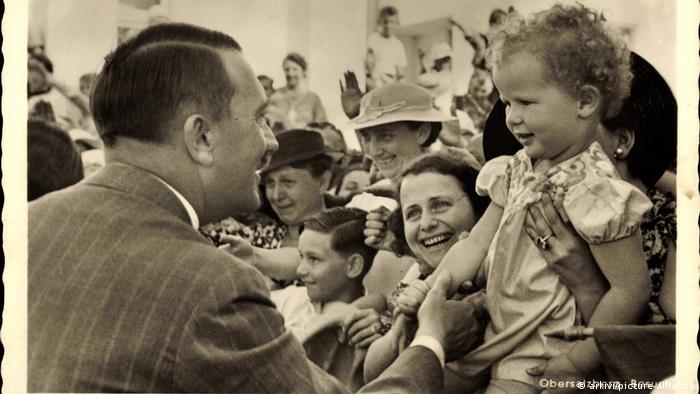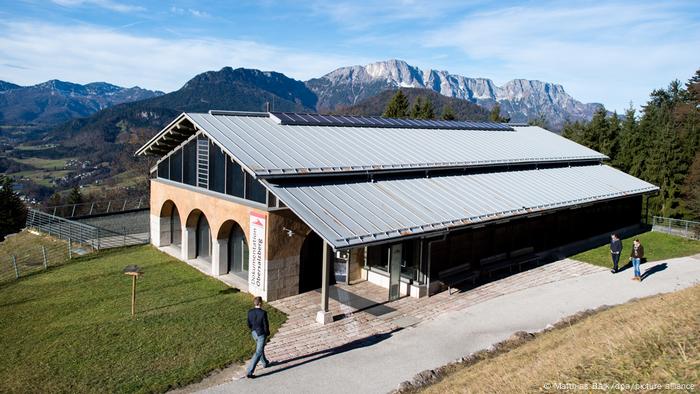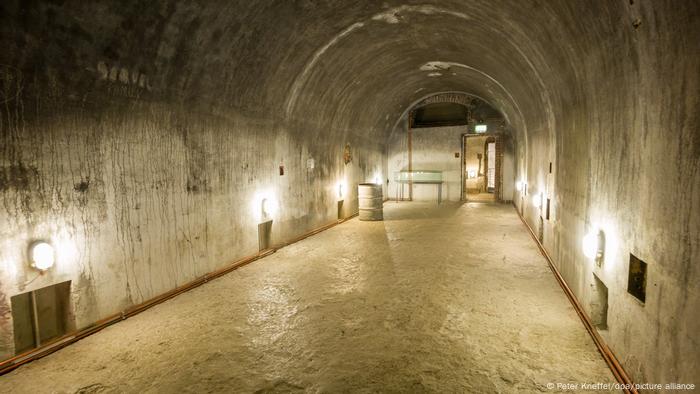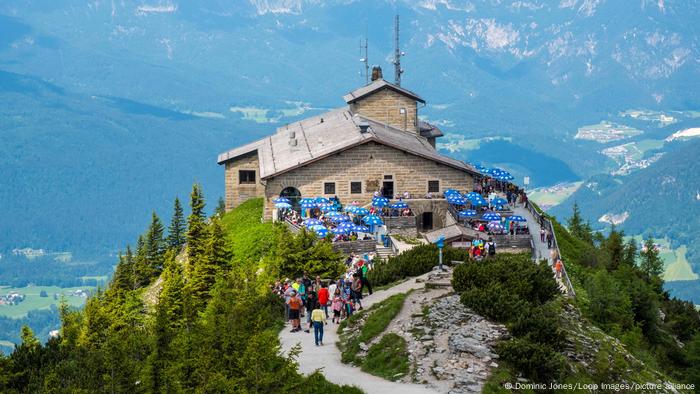Nestled in the imposing mountainous region of the Bavarian Alps, not far from Lake Königssee, Obersalzberg lies at an altitude of around 1,000 meters above Berchtesgaden, a town situated close to the Austrian border.
The view is spectacular here — Adolf Hitler thought so too, as he picked this place for his holiday home long before he became Chancellor of the German Reich.
Years before he started World War II and the Holocaust, Hitler was seen as a normal vacationer — an “sociable person,” as his first landlord there later recalled.
In 1925, Hitler rented a log cabin in the woods, where the second part of his diatribe, “Mein Kampf” (“My Fight”), was written; later he had a country house called “Wachenfeld.”
After Hitler took power in Germany in 1933, he bought the modest property and had it converted into a luxurious mountain house, boasting amenities that included panoramic windows, a cellar bar and a bowling alley.
Land for this 100-hectare “restricted Führer zone” — that also housed the vacation homes of his Nazi entourage, Hermann Göring and architect Albert Speer— was either confiscated from the locals or acquired at ridiculously low prices.
Control center of power
The summer residence became the Führer’s second seat of government alongside Berlin, with SS barracks, administration buildings, workshops and underground bunkers.
Soon, politicians, heads of state and military leaders from all over the world met at Obersalzberg. Hitler negotiated here with British Prime Minister Neville Chamberlain and dined with the leader of Italian Fascist party, Benito Mussolini.
The picture postcard idyll also proved to be the perfect backdrop for Hitler to present himself as a man who was close to nature and the people. Photos of him gazing pensively into the distance, patting blond children’s heads, shaking hands, sitting on the terrace with his mistress Eva Braun or walking his sheepdogs went global.
Turned into a place of remembrance
One can learn all of this at the Obersalzberg Documentation Center, which was established in 1999 as a place of learning and remembrance and has now been expanded, via a 1,000-square-meter building.
The original building was designed for a maximum of 40,000 visitors a year and has long since become too cramped for the throngs of tourists from all over the world. Above all, many want to know where exactly Hitler lived on the grounds, but not much is left of the original buildings.
A large part of the complex on Obersalzberg was destroyed in a bombing raid by the British Royal Air Force on April 25, 1945.
On May 4, the US Army moved into Berchtesgaden — and remained stationed there until 1995.
After the final withdrawal of the American troops, the state of Bavaria wanted to put an end to the “wild” Hitler tourism, and especially prevent pilgrimages by far-right followers. A luxury hotel and a documentation center were therefore built at the historic site to channel tourist and political interest.
Tourist magnets: Eagle’s Nest and bunker
The “Hotel zum Türken” was spared the bombing raids and was returned to the heirs of its original owner, Karl Schuster. It had been expropriated by the Nazis, as early as 1949 — including the bunkers built underneath. While Hitler himself had not resided here, as is often falsely claimed, the Reich Security Service responsible for his personal protection did as well as men from the SS (or Gestapo) sometimes.
Earlier this year, the hotel was sold to a long-established Berchtesgaden business family; the building’s future fate remains uncertain.
The Kehlsteinhaus, also spared bombardment, has since turned into another tourist magnet. Better known internationally as the “Eagle’s Nest,” the building literally symbolizes the summit of Nazi power.
Perched on a rocky peak, it is where many of the regime’s decisions were made.
Hitler’s close confidant, the NSDAP party secretary Martin Bormann, had it built at an altitude of 1,834 meters — supposedly as a gift for Hitler’s 50th birthday.
Even if this has not been proven beyond reasonable doubt, the house on the rugged terrain is a symbol of National Socialist megalomania, writes Florian Beierl in his book “The History of the Kehlstein”: “A gleaming gold elevator in the middle of the mountain, through which one was lifted up to the ‘summit of power,’ as it were — all this was only too well suited to dazzle people.”
Today, the Kehlsteinhaus is home to a popular inn.
Opening planned for 2022
It is not only the spectacular views, but also the “Führer” myth that draws people to Obersalzberg in droves. Most recently, there were around 170,000 visitors a year. The Documentation Center couldn’t manage such crowds, which is why it has now been extended; it is scheduled to open in 2022.
On 800 square meters (with 230 square meters more being planned for temporary exhibitions), the curators from the Leibnitz Institute for Contemporary History want to completely review the permanent exhibition, “Idyll and Crime” — through multimedia and numerous other exhibits, as well as a detailed landscape model.
This article was originally written in German.
What happened to Hitler’s power center at Obersalzberg
Source: Pinoy Pop News




0 Comments